A classic chronograph this time on the blog, a vintage Zenith El Primero A385.
(Click pictures to enlarge)
The story of the El Primero is legendary in the watch world. Development started on the El Primero (meaning ‘the first’ in Spanish) in 1962, with Zenith hoping to unveil the first automatic chronograph just in time for their centennial in 1965. Unfortunately things didn’t go as planned and it wasn’t until late 1968 that the first working prototypes were finished. With other manufacturers nearing completion of their own automatic chronograph calibers, Zenith stole a march on their competitors by holding a low-key press conference in January 1969 showing two working prototypes and claiming the title.
However, as production models were not available to the public until October 1969, making them the third manufacturer to market after Seiko and Heuer et al. (in the spring and summer of 1969 respectively), who was actually the first? The debate still goes on, and the whole story is covered in more detail by Jeff Stein’s excellent article, Project 99.
The watch in this post was one of the first models to be released in 1969, along with two other models, the A384 and the A386.
More models were to follow in the early 1970’s, as well as models from their sister company Movado which also used the El Primero movement (I wrote about one such Movado here).
Although still in production today, the El Primero came very close to being “just another discontinued calibre” in 1975, when as a result of the quartz revolution, the Zenith Radio Corporation (the owners of the company at the time) decided that quartz watches were the future and the tooling for all mechanical calibres was to be sold for scrap, by the ton, to the highest bidder.
Needless to say, after a century of producing quality mechanical calibres this decision wasn’t well received by the work force, especially not by manufacturing foreman Charles Vermot who had been involved with the El Primero since its preliminary sketches. Despite his protestations the sale was to go ahead as planned, but in a move that undoubtedly saved the El Primero, Vermot defied the orders from above and evening after evening, began hiding the tooling and presses for the El Primero (numbering 150 in total, many weighing over a ton) in unused recesses of the factory, all the while keeping a record in a ring binder which he hid in the attic.
Ebel bought Zenith in 1978 and were keen to restart production of the El Primero, but how would they do that without the necessary tooling? It was at this point that Charles Vermot stepped forward and admitted to his insubordination – unsurprisingly, he was congratulated rather than punished; the tooling was re-instated, and with Ebel’s help full production of the El Primero started again in 1984.
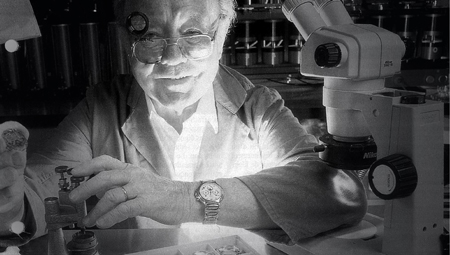
From a technical perspective, the El Primero calibre can be seen as “having it all”; automatic winding, a high beat rate of 36,000 bph (10 ticks per second) making for an incredibly smooth sweep and chronograph accuracy to 1/10th second, an integrated design allowing the watches to be slimmer than competing modular chronographs, and a date with independent quickset via the crown.
Cramming in all that good stuff does make it relatively complicated however – the going side of the movement is pretty ‘busy’, and a peek under the dial uncovers a plethora of parts.
As you may have spotted in the first picture, the watch in this post arrived missing the reset pusher, and there was no sign of life from the movement with the chronograph either engaged or disengaged which was a concern.
On closer inspection, it was immediately obvious that things weren’t right as a number of the components weren’t located properly underneath the chronograph bridge. I can only assume that a previous watchmaker had taken the watch apart, considered the job too difficult and simply screwed the bridge back on again. Miraculously, none of the parts were damaged and all the pivots were still intact. However, my initial relief was short lived when I discovered that the chronograph bridge was now bent. By not locating all the components correctly first, the bridge had been bent upwards when the screws were fully tightened down.
You might imagine that simply bending the bridge back down again would be an easy solution, but once a piece of metal has been bent, the material stretches and it’s very difficult to return it to its former state – try it with a paper clip and you’ll see what I mean. In the world of horology where tolerances are measured in fractions of millimetres, this can have a dramatic effect, and especially so on this calibre where the tolerances are particularly tight.
The good news was that with the winding components removed and the chronograph disengaged, the base movement actually started ticking which was one less concern, but with the chronograph bridge bent back down again and all the components in place, there were still problems with the running of the chronograph and the reset mechanism, plus the automatic winding rotor dragging on the outer edge of the movement.
Making an adjustment to solve one problem had a knock on effect elsewhere, so it took quite some time and patience to get everything working properly. However, my patience paid off and after a full service the movement was fully operational again and looking good.
From a cosmetic perspective, the watch wasn’t too bad. The lume had deteriorated on the dial and had fallen out of the hands completely, so that needed to be replaced. The hour markers had tarnished too over the years, which could be improved but not removed completely.
With the movement and cosmetic work completed, both pushers were replaced with new items to ensure a perfect match, the case was cleaned and the crystal was polished to finish the job.
Finding vintage El Primeros in good condition is not easy these days, so it may interest readers to know that Zenith released a modern re-issue in 2009 under the banner ‘The Originals’, albeit in a limited release of just 500 per model.
Rich.
** Many thanks to Prashant James for letting me feature his watch on the blog. **

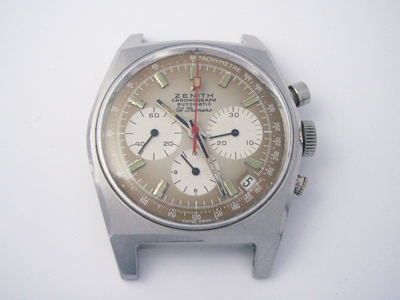
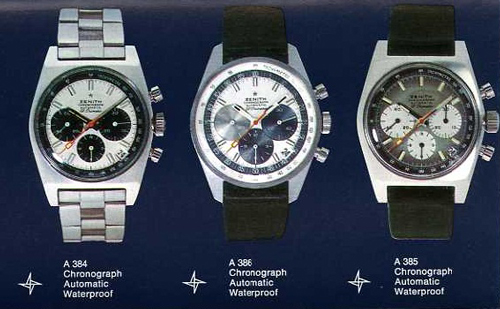
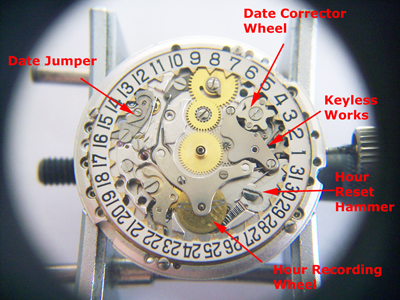
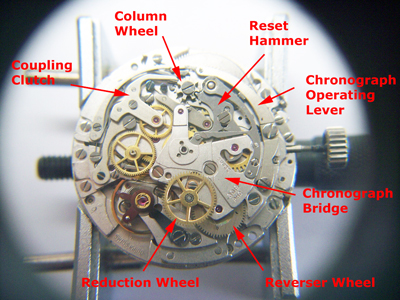
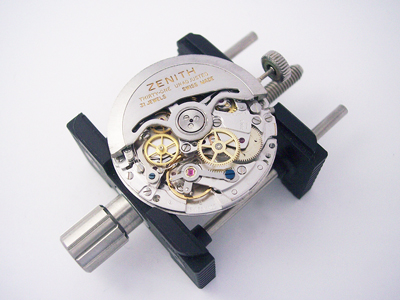
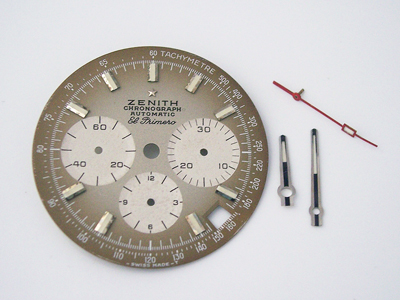
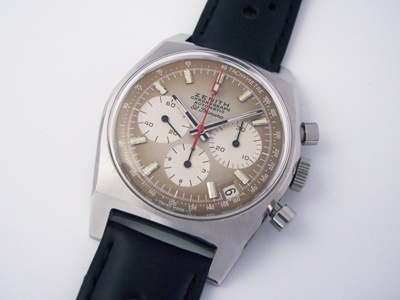
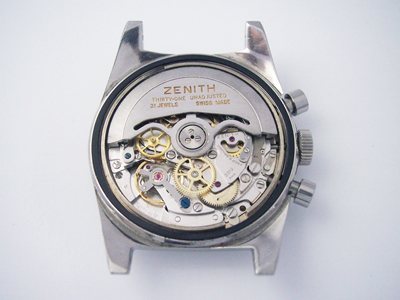
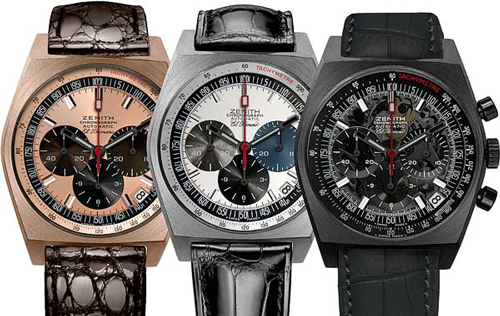
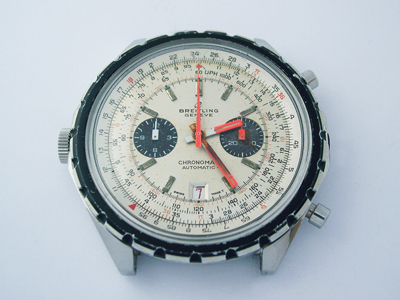
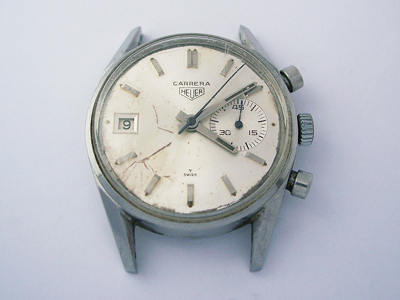
Thanks for the corrections Rick!
Rich.
Despite the long time since this article was posted, it still remains one of the good articles on the 3019PHC, and thus comes up in searches. So, for the sake of future searchers, allow me to suggest a couple of corrections. Ebel did not actually own Zenith. Zenith Electronics sold MZM (Movado and Zenith’s combined holding company) to Paul Castella of Dixi Machine in 1978. Dixi subsequently sold Movado to the North American Watch Company in 1982, resulting in the latter changing its name to the Movado Group, which it still is. Dixi also owned the Zodiac watch company from about that time. Dixi continued to own Zenith until 1999, when they sold it to LVMH.
In the late 70’s, Pierre-Alain Blum of Ebel predicted a mechanical comeback, and looked around for an available high-grade automatic chronograph, and there were few available at the time. Finally, after being told the tooling was destroyed, he asked Zenith if they had any remaining ebauches Ebel could buy, and Vermot, who had retired, was consulted. By that time, Vermot could tell his story, and several thousand finished movements plus all the tooling and designs were recovered from the attic of the Zenith factory where he had hidden them. Vermot had spent much of his career at the Martel Watch Company, where he had started in 1936. The Pellaton brothers of Martel created the most revered chronographs in history, including the Univeral Geneve caliber 285 used in the Compax watches (which Zenith had also used and designated the 146). Zenith bought Martel in 1959-1960, and soon after the Martel shop began development of the El Primero. A study of the UG285 and the 3019PHC reveals a lot of family resemblances. The movement above might have been made in Ponts du Martel rather than in Le Locle.
Ebel produced their Sport Classic Chronograph using these finished movements and offered them for sale in 1983. The success of that watch encouraged Zenith to restore production, which they completed in 1986 with the caliber 40.0, and the following year with the caliber 400. These increasingly used revised and updated tooling from the stuff Vermot had hidden. Ebel continued to use Zenith El Primero movements until 1994. In 1995, Ebel started using their proprietary version of the Lemania 1340. Ebel chronographs with Zenith movement are still the cheapest way to own an early Zenith El Primero.
Great article. Love the history tidbits!
This watch is just great. Love the shape of the case. Like the old Czech Air Force Watches.
Sad that they are so rare and costly. Would love to have one.